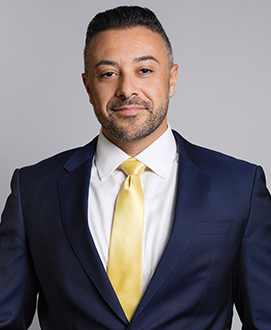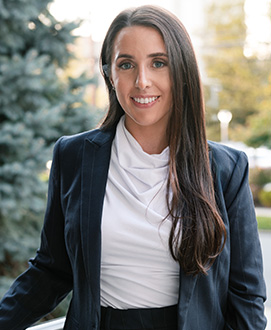Fatal NJ Turnpike Crash Puts Spotlight on Wrong-Way Driving
Four dead while at-fault driver survives with serious injuries
On October 19, 2025, at approximately 12:42 a.m., a Dodge pickup truck traveling northbound against traffic collided head-on with a southbound Mazda SUV carrying four students, who died in the crash. The horrific crash is a nightmare scenario for anyone who drives on the freeway. How can a vehicle be going the wrong way into 70 mile-per-hour traffic, and how can its driver be apparently clueless until it’s too late? At Razi & Giampa Law, LLC in Paramus, we represent victims of car crashes, many of whom have been horribly injured. In the interest of safety, we present this examination of wrong-way crashes, so you can understand why they happen and how to prevent them.
Apparent DUI in Salem County NJ Turnpike crash
According to NBC Philadelphia, the collision occurred near mile marker 1.3, south of Interchange 1 (Delaware Memorial Bridge), in Carneys Point Township, Salem County. The impact caused the Mazda SUV to spin into the right lane, where it was struck from behind by a Freightliner tractor-trailer. Upon that secondary impact, the Mazda caught fire. The four fatalities in the Mazda SUV were the 19-year-old driver and three 18-year-old passengers. The driver of the tractor-trailer was not injured.
The driver of the Dodge pickup, a 41-year-old man of Westminster, Colorado, survived with serious injuries. He is suspected of driving under the influence and faces charges including four counts of vehicular homicide and reckless endangerment. NJ State Police are investigating how he entered the wrong lanes.
What to know about Wrong-Way Driving crashes
Wrong-way driving (WWD) crashes occur when a vehicle enters a freeway or divided highway against the flow of traffic, often leading to head-on collisions. These incidents are relatively rare but disproportionately deadly, accounting for about one-to-two percent of all freeway crashes, but up to 3.7 percent of fatal ones on divided highways. Key factors for understanding wrong-way crashes include:
- Frequency — WWD incidents cause approximately 300-400 fatalities in the United States annually, with about 500 deaths from related crashes on divided highways. The Federal Highway Administration (FHWA) reports that WWD crashes represent one-to-three percent of all freeway accidents but result in fatality rates 10-20 times higher than other crash types. In recent years (2015-2020), there were about 1,000 to 1,500 reported WWD crashes annually on U.S. freeways, though underreporting is common due to non-fatal incidents. States like California and Texas see the highest frequencies due to their extensive highway systems.
- Causation — For a wrong-way crash to occur, a driver must enter the freeway via an off-ramp or somehow get turned around while on the roadway. The leading contributing factors for these errors include:
- Impairment: Alcohol or drug impairment is the leading cause, involved in 60-70 percent of WWD crashes. Intoxicated drivers often miss signs or ramps, entering wrong-way.
- Distraction and confusion: About 20 percent of incidents stem from driver distraction (e.g., phones, navigation) or unfamiliarity with roads. Older drivers or those with cognitive impairments may confuse exits.
- Infrastructure issues — Poorly designed ramps with inadequate signage or lighting exacerbate risks.
- Other: Fatigue, poor visibility (e.g., darkness, fog, rain, whiteout from snowfall), or intentional acts (e.g., evading police) contribute to 10-15 percent.
- Types of drivers — Certain drivers are more likely to be involved in a wrong-way incident, such as:
- Impaired: Predominantly young adults (ages 20-40) under the influence of alcohol or drugs account for 50-60 percent of WWD perpetrators.
- Elderly: Seniors (65+) are overrepresented due to confusion or medical issues, involved in 15-20 percent of cases.
- Distracted or inexperienced: Novice drivers or those using GPS/apps make up 10-15 percent, often entering ramps backward.
- Male: Male drivers are involved in 70-80 percent of WWD crashes, per NHTSA data.
- Time of day — Nighttime, particularly between midnight and 5 a.m., accounts for 50-70 percent of incidents. Low visibility, fatigue, and higher impairment rates tend to coalesce late at night. Daytime crashes are rarer, often depending on driver confusion at complex interchanges.
Unfortunately, the frequency of wrong-way driving crashes has increased 10-15 percent since 2010 due to more vehicles and greater distractions. Authorities in some areas have instituted countermeasures like wrong-way signs in hopes of reducing incidents.
Why wrong-way driving produces the deadliest crashes
WWD crashes are 12 times more likely to be fatal than other accidents, since head-on impacts are so common. Head-on collisions account for 11 percent of U.S. fatal accidents. It’s a popular myth that such crashes are deadly because of “additive force impact,” meaning that two vehicles traveling 70 miles-per-hour and colliding head-on with a force of 140 miles-per-hour. The more accurate understanding is that they meet with the force of a 70 mile-per-hour vehicle hitting an unyielding brick wall. Crumple zones do very little to transfer the force, since the cars basically strike engine block to engine block. Since so little force is distributed through the vehicle, it is transferred to the occupants. NHTSA data shows head-on crashes have a 50-60 percent fatality rate per incident, versus 10-20 percent for side-impacts. In 2021, head-on collisions caused ~3,500 U.S. deaths, with survival rates below 50 percent in high-speed cases.
Wrong-way driving is incredibly risky. To remain safe, drivers must appreciate these risks and avoid any behaviors that contribute. Don’t drive under the influence and don’t proceed onto a freeway if there is the slightest doubt you’re using the proper ramp. WWD crashes are rare; we’ve got to make them impossible.
Contact Razi & Giampa Law in Paramus for a free auto accident consultation
Razi & Giampa Law in Paramus provides highly professional and compassionate legal representation for victims of highway accidents in Bergen County and throughout New Jersey. To schedule a free consultation, call us today at (201) 534-5011 or contact our firm online.


